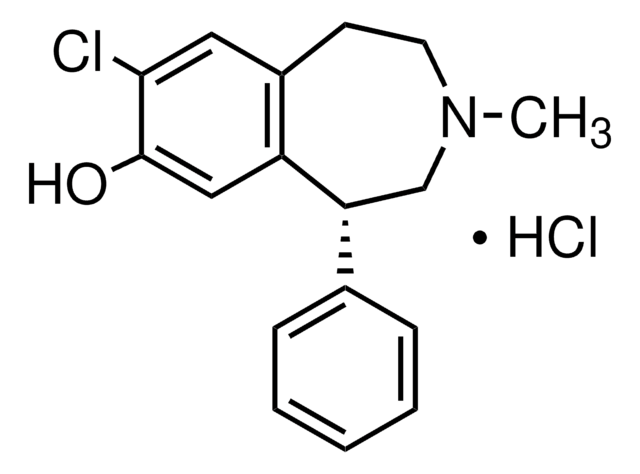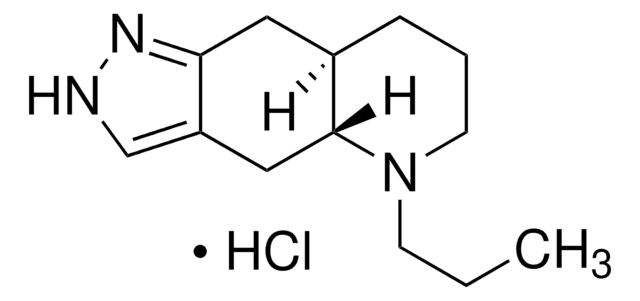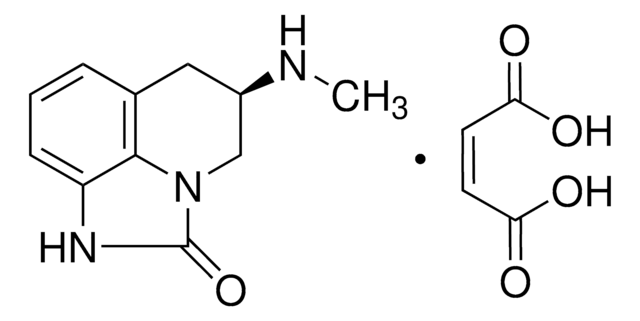L135
L-741,626
≥98% (HPLC)
Synonim(y):
(±)-3-[4-(4-Chlorophenyl)-4-hydroxypiperidinyl]methylindole
About This Item
Polecane produkty
Poziom jakości
Próba
≥98% (HPLC)
Postać
powder
kolor
white to beige
rozpuszczalność
DMSO: ≥20 mg/mL
ethanol: 24 mg/mL
H2O: insoluble
temp. przechowywania
room temp
ciąg SMILES
OC1(CCN(CC1)Cc2c[nH]c3ccccc23)c4ccc(Cl)cc4
InChI
1S/C20H21ClN2O/c21-17-7-5-16(6-8-17)20(24)9-11-23(12-10-20)14-15-13-22-19-4-2-1-3-18(15)19/h1-8,13,22,24H,9-12,14H2
Klucz InChI
LLBLNMUONVVVPG-UHFFFAOYSA-N
informacje o genach
human ... DRD2(1813) , DRD3(1814) , DRD4(1815)
Zastosowanie
Działania biochem./fizjol.
Cechy i korzyści
Kod klasy składowania
11 - Combustible Solids
Klasa zagrożenia wodnego (WGK)
WGK 3
Temperatura zapłonu (°F)
Not applicable
Temperatura zapłonu (°C)
Not applicable
Środki ochrony indywidualnej
Eyeshields, Gloves, type N95 (US)
Certyfikaty analizy (CoA)
Poszukaj Certyfikaty analizy (CoA), wpisując numer partii/serii produktów. Numery serii i partii można znaleźć na etykiecie produktu po słowach „seria” lub „partia”.
Masz już ten produkt?
Dokumenty związane z niedawno zakupionymi produktami zostały zamieszczone w Bibliotece dokumentów.
Nasz zespół naukowców ma doświadczenie we wszystkich obszarach badań, w tym w naukach przyrodniczych, materiałoznawstwie, syntezie chemicznej, chromatografii, analityce i wielu innych dziedzinach.
Skontaktuj się z zespołem ds. pomocy technicznej





